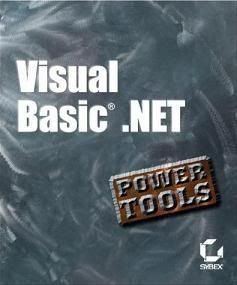
Visual Basic .NET WAS not written by Visual Basic programmers. The entire .NET family of languages was created by C programmers. C—and its cohort OOP—is an academic language. Visual Basic is a popular language. These facts have consequences.
The authors of this book are not beholden to any organization. We’re not writing for MS Press, nor are we affiliated with any corporation or school. Indeed, we like to think that we’re not dependent on anyone for our paycheck—other than you, dear reader—and can therefore be more objective than many of our colleagues.
We can ask heretical questions such as why OOP should be used in all programming situations as many of its proponents insist. We can question the wisdom of allowing C programmers to write the narratives and code examples for the Help system in VB.NET. We can wonder why structures are included in VB.NET if OOP experts insist that you should never use them.
We can freely applaud VB.NET when it improves on traditional VB programming features (streaming and serialization, for instance), and point out when VB.NET creates needless confusion. (Some collections in VB.NET are zero-based; some are one-based. And there’s no rhyme or reason involved, no pattern you can discover, no rule you can learn, to deal with this problem.)
Another benefit of being outside programming and academic officialdom is that we can be clear. There is a lingo developing around programming, and too much of it appears to serve no real purpose other than job protection. If others cannot read your source code, or even understand your comments, then it’s likely they’ll respect you and you’ll keep your job. Likewise, if you follow the party line and keep your geek-speak up-to-date, you’ll be on the team. So the usual little closed society of a priest class is being built. Remember that only a short time ago mass was said in Latin, a language that the churchgoers couldn’t understand. And if you visit a college class in music theory or film theory today, you won’t comprehend most of what’s being said.
TABLE OF CONTENT:
Chapter 01 - Understanding the .NET Framework
Chapter 02 - New Ways of Doing Traditional Jobs
Chapter 03 - Serialization Techniques
Chapter 04 - Leveraging MS Office in Your Applications
Chapter 05 - Understanding .NET Security
Chapter 06 - Encryption, Hashing, and Creating Keys
Chapter 07 - Advanced Printing
Chapter 08 - Upon Reflection
Chapter 09 - Building Bug-Free and Robust Applications
Chapter 10 - Deploying Windows Applications
Chapter 11 - Building Data-Driven Web Applications
Chapter 12 - Peer-to-Peer Programming
Chapter 13 - Advanced Web Services
Chapter 14 - Building Asynchronous Applications with Message Queues
Chapter 15 - Practical ADO.NET
Chapter 16 - Building Middle-Tier Components
Chapter 17 - Exploring XML Techniques
Chapter 18 - Designing Data-Driven Windows Applications
Chapter 19 - Working with Regular Expressions
Chapter 20 - Advanced Graphics
Chapter 21 - Designing the User Interface
Chapter 22 - Using the .NET Compact Framework and Its Emerging Technologies
download:
Code:
http://rapidshare.com/files/3377567/vbnet_pow_tools.rar
password: ganelon

No comments:
Post a Comment